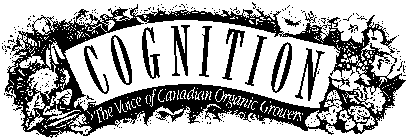

Cognition Index | Virtual Library
| Magazine Rack
Search
| Join the Ecological Solutions Roundtable
THE ORGANIC LANDSCAPE:
The Organic Landscape Gardening With Native Plants
by Lorraine Johnson
Many of us garden organically out of a deep commitment to environmental issues. We’re aware of the fact that all of nature’s processes are connected: whatever we pour into the soil ends up in the groundwater; whatever we use to poison pests will affect beneficial bugs and birds, too.
One way to extend our ecological awareness from the vegetable garden to the ornamental garden is to consider naturalizing our yards and garden beds.
The term naturalization means different things to different people in different contexts. What I mean by naturalization is that the gardener is basing his or her garden design on natural models, natural systems and natural processes. The gardener is working with nature, not fighting against her. To my mind, this is an extension of the organic philosophy: nature is your gardening partner, not a force to be overcome in your efforts to create beautiful, rejuvenating spaces.
If this makes it sound like you need a botany degree to begin naturalizing your garden, rest assured that there are some relatively simple ways to begin the process of working with nature. The first rule — and it’s a familiar rule for any gardener — is to consider the specifics of your garden site. Ask your garden what it wants to be. Having a conversation with your garden may sound like strange advice, but you need to know the detailed intricacies and idiosyncrasies of your specific plot.
Evaluating your garden’s conditions will provide you with many clues about where to start your naturalization efforts. If your garden is shady, why not let it reach its fullest expression in a woodland garden full of native plants that flourish in shade? If, on the other hand, you’ve got a sunny spot, work with nature by creating a meadow plant community, full of colorful wildflowers, maybe with some native grasses for texture and accent. If your garden is somewhere between sun and shade, you can create a woodland edge plant community, with appropriate plants positioned according to their sunlight requirements.
Once you’ve decided on the plant community you’re modelling your garden after – woodland, meadow or edge community – you can begin to consider the plants that are appropriate for your site. Although the details will vary for every garden (after all, every place is different), my general advice is that you just can’t beat native plants! When you consider that native plants have evolved here for thousands of years, that they actually want to grow here, it makes perfect sense that in following nature’s lead you’ll have the most success with native plants.
When I decided I wanted a native plant garden, I began by learning everything I could about plants that were native to my area through field guides, walks with field naturalists, and explorations of wilderness areas and parks.
I live in downtown Toronto, so I have modelled my woodland front garden on the maple/beech forest community by planting an understorey of groundcovers such as wild ginger, foamflower and violets. Spring ephemerals (which go dormant after their burst of spring bloom) include trilliums, jack-in-the-pulpit and virginia bluebells. For texture and cool greens throughout the summer, I’ve put in meadowrue, black snakeroot and Solomon’s-seal. In the fall, the asters and goldenrod light up the garden with color.
In my backyard, which is sunny, I’ve tried to model the garden on a meadow plant community – great for the butterflies and bees that buzz the place all summer. Along with the wildlife benefits of this meadow is the fact that my back garden needs no extra watering whatsoever and very little maintenance. The drought-tolerant, easy-to-grow native perennials I’ve planted, roughly in order of bloom, include lupine, bee balm, coreopsis, black-eyed Susan, nodding wild onion, purple coneflower, ironweed, Joe-pye weed, swamp milkweed, grey-headed coneflower, cup plant, heath aster and goldenrod.
In my experience, the meadow plants were immediately rewarding. They looked great and bloomed the first year, required very little maintenance, enjoyed my poor soil (in fact, meadow plants prefer relatively poor soil – great for the lazy gardener), spread like mad with no fussing, and quickly attracted all kinds of fascinating insects.
The woodland garden, though, has been more work and taken more time to look good. I’ve learned that great, rich, humusy soil is the key to woodland garden health, so I spend a lot of time adding compost and leaf mulch. As well, many woodland plants such as trilliums and jack-in-the-pulpit take time to reach their full potential, though others, such as wild ginger and ferns, are quicker to establish themselves and spread. I don’t mind that the woodland is taking time, though — I welcome the lesson in patience that my native garden is teaching me.
COG member Lorraine Johnson is the author of The Ontario Naturalized Garden: The Complete Guide to Using Native Plants (Whitecap, 1995).
Copyright © 1995.
Lorraine Johnson.Reprinted with permission. All rights reserved.
Info Request | Services | Become EAP Member | Site Map
Give us your comments about the EAP site
Ecological Agriculture Projects, McGill University (Macdonald
Campus)
Ste-Anne-de-Bellevue, QC, H9X 3V9 Canada
Telephone:
(514)-398-7771
Fax:
(514)-398-7621
Email: info@eap.mcgill.ca
To report problems or otherwise comment on the structure of this site, send mail to the Webmaster